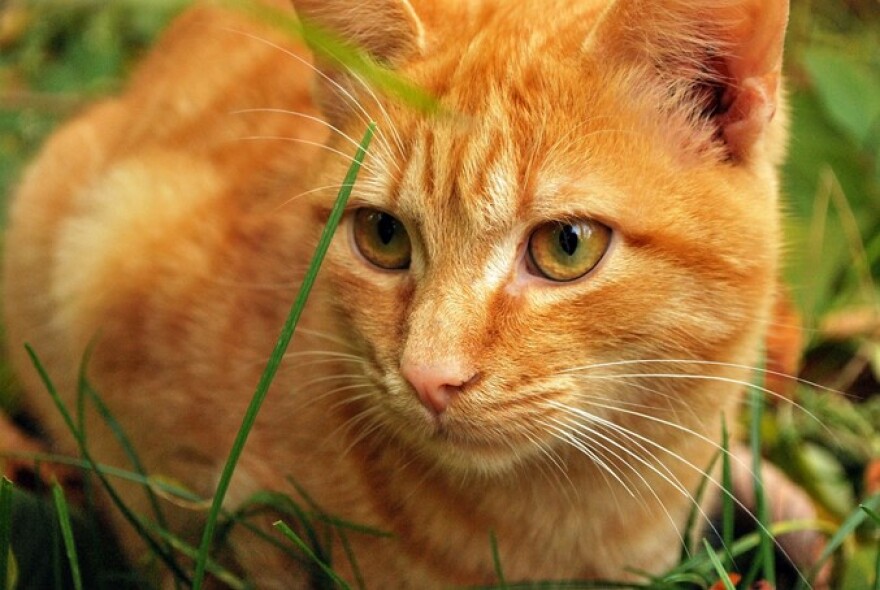It is summertime in Alabama, and that often means a lot of heat and a lot of humidity. However, this weather could endanger many animals. Allison Black Cornelius is the CEO of the Greater Birmingham Humane Society. She offers some do’s and don’ts when it comes to pet safety this summer.
When it comes to dogs, Cornelius said the first thing pet owners should do is get to know their animal. She said there are several risk factors that make some dogs more susceptible to heatstroke and other heat-related injuries than others. They include:
- Dogs that are old or very young in age
- Dogs that are overweight or obese
- Dogs that are not used to exercise or being outdoors
- Dogs with heart disease, heartworms and other cardiovascular conditions
- Dogs with muzzles on while outside
- Dogs with long hair or lots of fur
- Larger-sized dogs
- Dog breeds not meant to live in warm environments, including Huskies, Saint Bernards, Great Pyrenees and others
However, one risk factor that Cornelius said many pet owners overlook is dog breeds with short snouts. These dogs include French and English Bulldogs, Boxers, Pugs, American Staffordshire Terriers, Pit Bull Terriers and more.
“All the cute, little [flat-nosed dogs], everybody loves those dogs,” she said. “We see them out all the time, walking with their owners or playing in the dog parks, and they start to get lethargic. They stop and start lying down. The owner has no idea the dog is in trouble. We will walk over and say, ‘Let us help you,’ and [the owners] will just look at us like we’re being intrusive and crazy. You have to watch those breeds when it’s hot because they just can’t pant the way a regular dog with an extended [snout] is able to.”
If dogs are outside for an excessive amount of time or fall into one or more risk categories, they could develop heatstroke. Cornelius offers several symptoms that she said pet owners should look out for, including:
- Fast breathing or heavy panting
- Dry or sticky mouth
- Excessive or odd mouth movements
- Gum discoloration or the appearance of gum bruising
- Lethargy or disorientation
- Lying on their side
- Bowel incontinence
- Foaming at the mouth
- Seizures
Cornelius said if dog owners spot any of these symptoms, they should act quickly.
“If your dog starts to be lethargic or is really moving its mouth in a funny way, a sticky way, and it’s panting heavily, it’s time for you to get your dog in a cooler area or to get water on your dog and cool it down as quickly as you can,” she said. “You want to get it to cool water, not ice-cold water, and pour it over their head, their stomach [and] their feet. Or [use] towels soaked in water and wrap it around them. Just keep on replacing those towels on the dog, so that the airflow can get there and get their temperature back down.”
However, there are many ways to prevent heatstroke and other heat-related injuries. Cornelius said her first and biggest recommendation is leaving dogs indoors or giving them the ability to come inside when they need to.
“When it’s going to be above 90 [degrees Fahrenheit], just let your pet come inside,” she said. “It’s just too difficult to try to keep the water cool. Food, if it’s outside, tends to attract flies and tend to go bad quicker. It’s not a great idea to have dogs out in these extreme temperatures, especially if you bring your dog in at night with the air conditioner. It’s just not used to this.”
Even if pets have an option to come inside, Cornelius said most times it is best to keep your pets indoors at all times.
“I personally had a pet a couple of years ago, a Chow Chow, very furry, older [dog] that had a dog door to go in and out,” she said. “I noticed she was not acting herself. She had overheated, and we really don’t know how. We took her to the vet, and she was beginning to have signs of heatstroke. That’s with her being able to come into the garage. I wish I would have kept her in the garage and not let her have access to the outdoors. If you have an indoor-outdoor dog, indoors is better and a covered porch is certainly better. You just have to think about things like that because it’s just very, very hot outside, and dogs are going to be dogs.”
Cornelius said pet owners should also keep their animals up to date on vaccinations and have their dogs checked for heartworms and other conditions before summer starts. She also recommends leaving cool, fresh water out at all times, as many dogs will not drink warm or algae-filled water.
In addition to what dog owners should do, Cornelius said there are many common mistakes dog owners make. She said one thing pet owners should avoid is walking their dog during the afternoon. Instead, dogs should be walked in the morning or the evening.
“We often will see people running in the heat of the day with their dog, and you can tell the dog is having a hard time because, a lot of times, they’ll prance,” she said. “They’ll pick up their feet almost like a Clydesdale does. That’s not because the dog’s running, it’s because their [paw] pads are burning. You need to be running in an area where the dog can be in the grass, or don’t run in the heat of the day. If they let their pet go, their pet would run to a shady area immediately.”
Cornelius said dog owners should also stop walking if they notice their dog pulling on its leash, lying down, or sitting or lying in bodies of water.
Cornelius said other habits dog owners should avoid, include:
- Leaving baby pools filled with water or leaving the hose on. Water left out in the sun can get scalding hot, leaving many dogs burned
- Leaving their dogs in the car, even when the windows are down
- Leaving their dogs in dog houses. Few dog houses have the proper ventilation needed to cool dogs down in the summer
It is not just dogs staying outdoors this summer; it is cats too. While cats are different than dogs, Cornelius said is important that cat owners follow the same precautions.

“The same rules apply. A cat can absolutely suffer from heatstroke,” she said. “They are not as efficient at cooling their body temperature. They don’t sweat other than from their paw pads, and that’s not really enough to cool down their whole body.”
Despite this, Cornelius said heatstroke is less common in cats than in dogs. This is because cats groom themselves more during the summer as well as limit their activity and move to shaded, cooler surfaces when they start to overheat. However, Cornelius said it is still important that cat owners understand the risk of heatstroke and how to help their feline friends avoid it.
Risk factors that make cats more susceptible to heatstroke and other heat-related injuries include:
- Cats that are overweight or obese
- Cats with no past experience living outdoors
- Cats with smooshed noses, including Persians, Himalayans, Exotic Shorthairs and others
Cats also show their own symptoms of heatstroke. They include:
- Lethargy
- Glassy eyes
- Difficulty breathing
- Fast heartbeat
- Excessive panting
- Awkward walking or stumbling
- Vomiting
- Gum discoloration or gum reddening
Above all else, Cornelius said it is important that all pet owners—regardless of if they own cats or dogs—keep their animals indoors when they can.
“We live in an area where people go, ‘Well, there’s dogs [and cats] outside,’” she said. “Not really. They don’t really live outside well, and they don’t live comfortably. They might be suffering and they don’t have any way to tell you. We want all of our pet owners to be humane and kind and passionate about keeping their pets safe.”
Readers can visit the Greater Birmingham Humane Society’s website for more information on how to spot animal cruelty, volunteer opportunities and where and how to adopt an animal in the Magic City.


